Editor’s Key Takeaways: From Sunrise to Nightfall: Mastering Cityscape Photography

Cityscape photography is a blend of architecture and environment, capturing cities in a way that inspires a specific mood and atmosphere. Here are some tips gathered from 20 stunning examples of cityscape photography:
- Find Pockets of Light: This technique involves capturing parts of the city bathed in sunlight, usually during a sunrise or sunset. It is a fantastic way to adopt a vibrant viewpoint in your photography. The lesson here is to find points in the city where light can leak into the scene by focusing on the symmetry and lines of a cityscape.
- Balance Between Sunset & Nightfall: One of the most captivating scenes in cityscape photography is the period between sunset and nightfall. At this time, the color of the sky contrasts beautifully with the city skyline. The shift in color tone, as seen in the examples, creates a stunning image. Therefore, the color of the images is as important as the scenery itself.
- Utilize the Technique of Timelapse: Timelapse photography provides a unique view of the city’s movement against its architectural backdrop. It’s an artistic way to show the city’s dynamism and energy, contrasting with the static architecture.
Introduction
Cityscape photography is dynamic and captivating. It creates a feeling of environment, time and emotion for the viewer. And, if you’re a photographer who’s interested in capturing architecture, cityscape photography is the perfect subject for you.
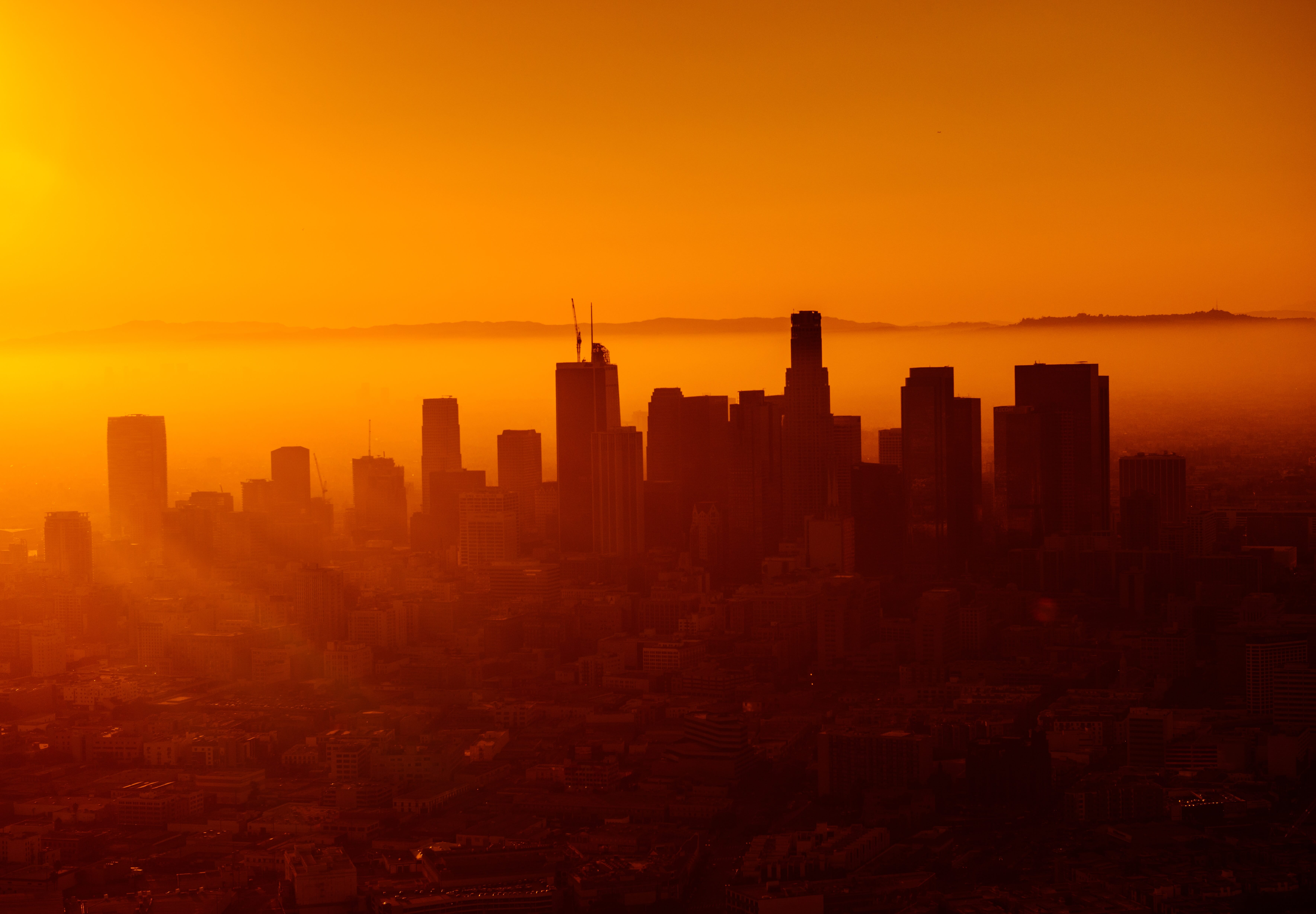
To help you get inspired to go out and shoot some iconic cityscapes, we’ve created a list of 20 breathtaking examples and what we can learn from them. Let’s check out the list below to see how you can shape your own visual work.
20 Examples of Stunning Cityscape Photography
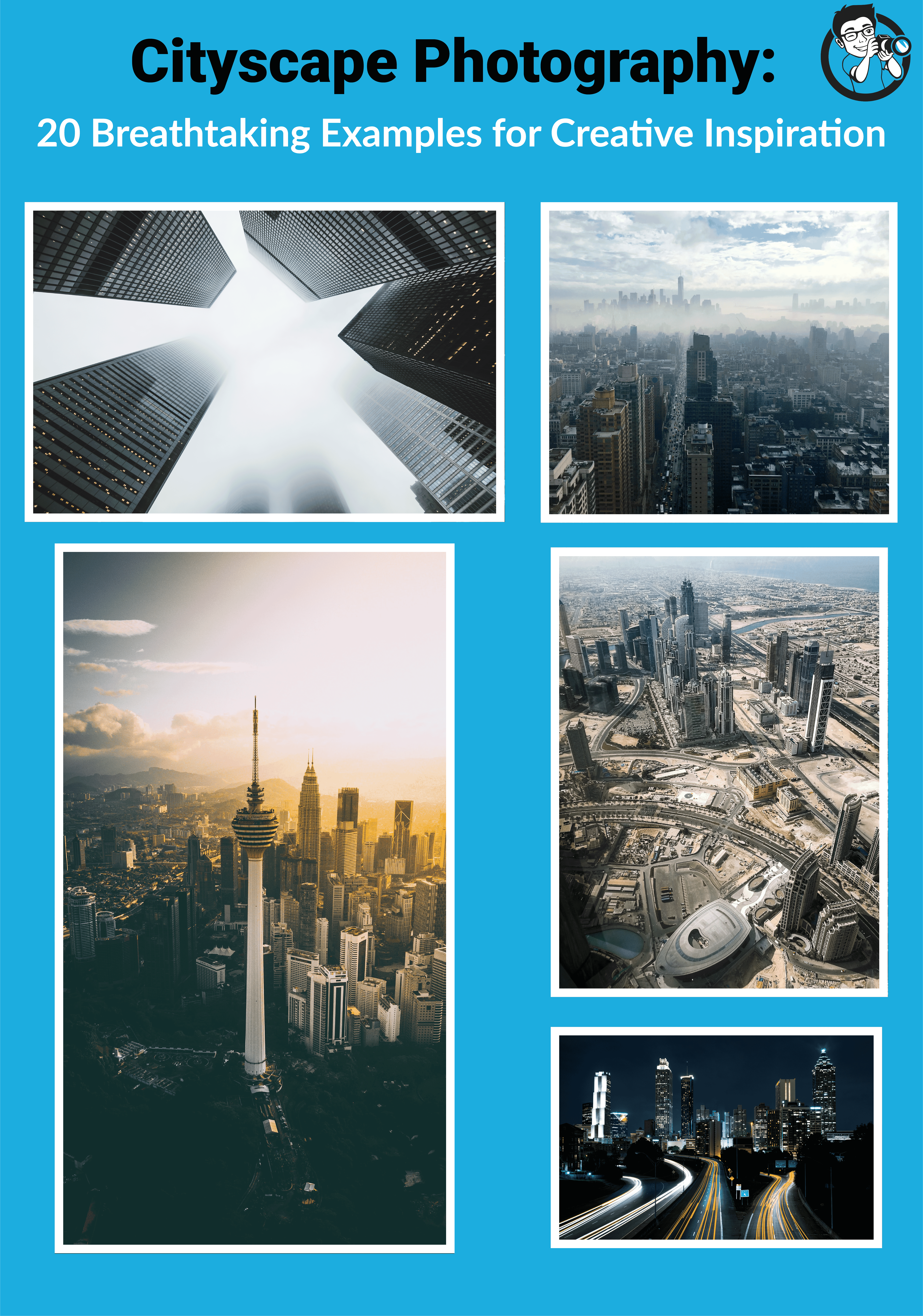
1. Find Pockets of Light

In this image, the photographer frames the cityscape with a glistening pocket of light. By capturing a city, either during sunrise or sunset, you’re going to create a dynamic viewpoint. What we can learn from this image is to find the points of access for light to leak into your scene.
With cityscape photography, symmetry and lines are key. Therefore, with the design and layout of a city, you can discover the most incredible lookouts that will offer a soft, flattering beam of golden light.
2. Balance Between Sunset & Nightfall
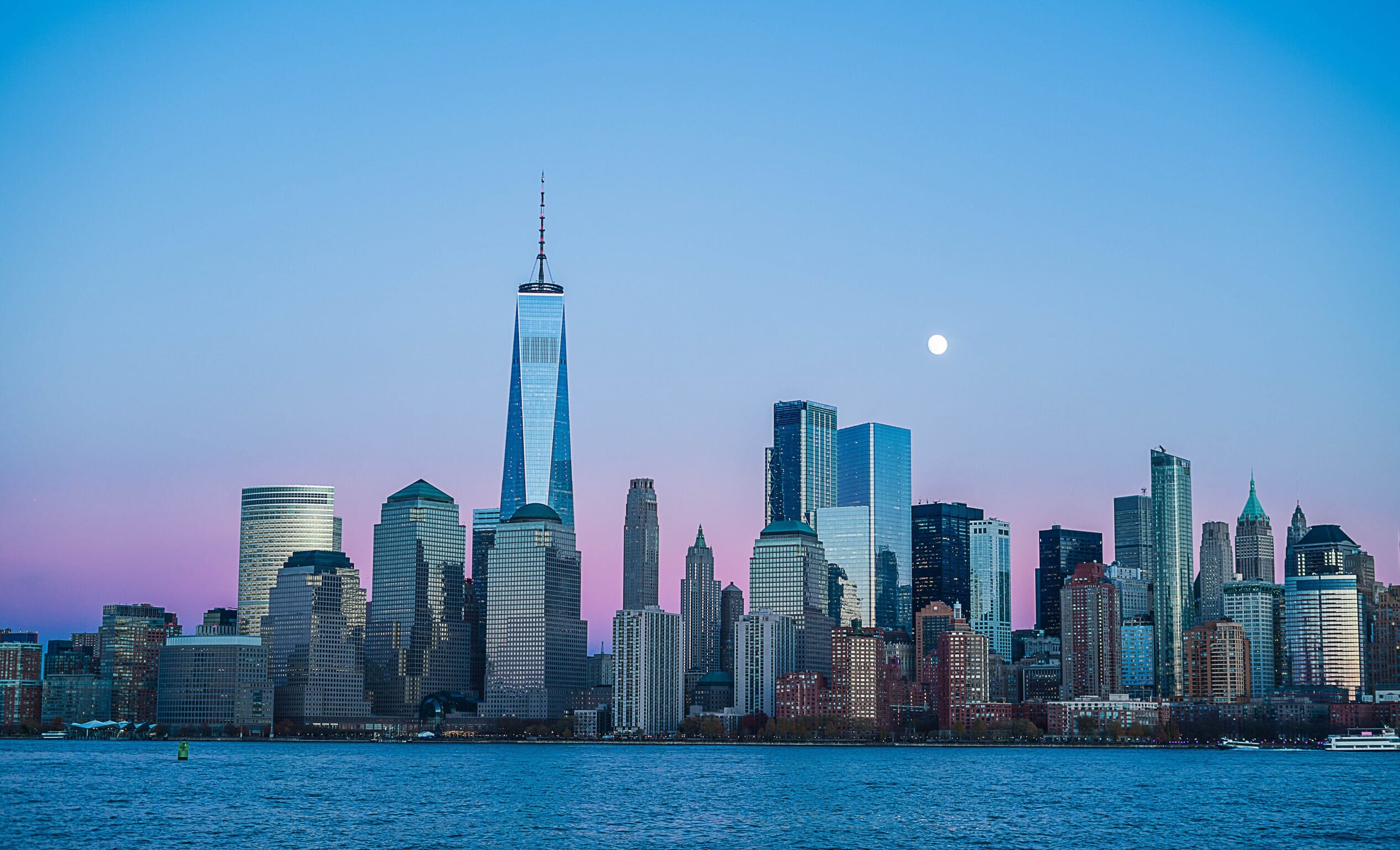
One of the most incredible scenes to capture is that delicate period between sunset and nightfall. This is where the sky turns a shade of purple-blue, before the skyline shifts to black signaling that nighttime has arrived.
Cityscape photography at this point in the evening can teach us that the color of our images is just as important as the scenery we are capturing. As you can see in the above image, the shades of blue complement the layout of the skyscrapers.
Related Post: Natural Light Photography Tips
We see a change in color tone across the skyline, making for a stunning image. Plus, if you look to the top right, you’ll see the small moon hanging above the rooftops. For images that are guaranteed to awe your viewer, photograph between sunset and nightfall.
3. Utilize the Technique of Timelapse
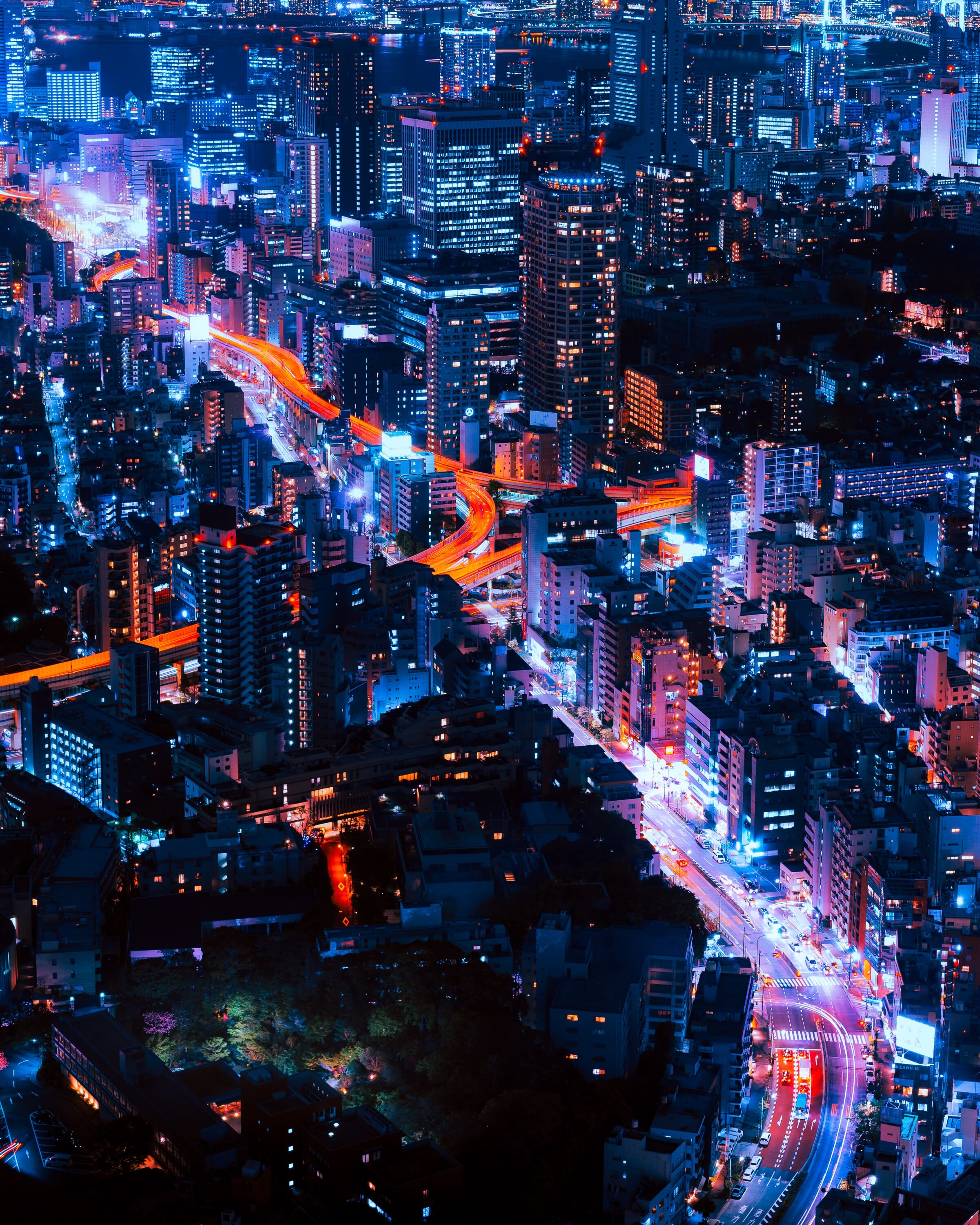
Another way to juxtapose the movement of the city with the architecture surrounding it is to utilize timelapse photography. Timelapse is used to showcase the pieces of the city as they move, shift and change over a period of time.
When you’re capturing a cityscape using timelapse, you will capture the streaks of light from cars passing by and the dancing of the city lights. What we can learn from this, is that cityscape photography is as creative as you’d like it to be. There are no limits to how you photograph a city. As long as you find and create your unique perspective for the viewer.
4. Place Your Cityscape in the Center of Your Frame

When you’re photographing a cityscape, you can create a perplexing image by placing your subject in the center of the frame. In the image above, the cityscape sits in the center, while the rest of the environment surrounds it as the focal point.
What we can learn from such a display is that placing your subject in the center instantly draws the viewer’s attention. We can completely fixate on the details and structure of the city when it serves as the center point of perspective. If you want to create definition in your images, take a note from this frame and center your photograph.
5. Include Your Surrounding Environment
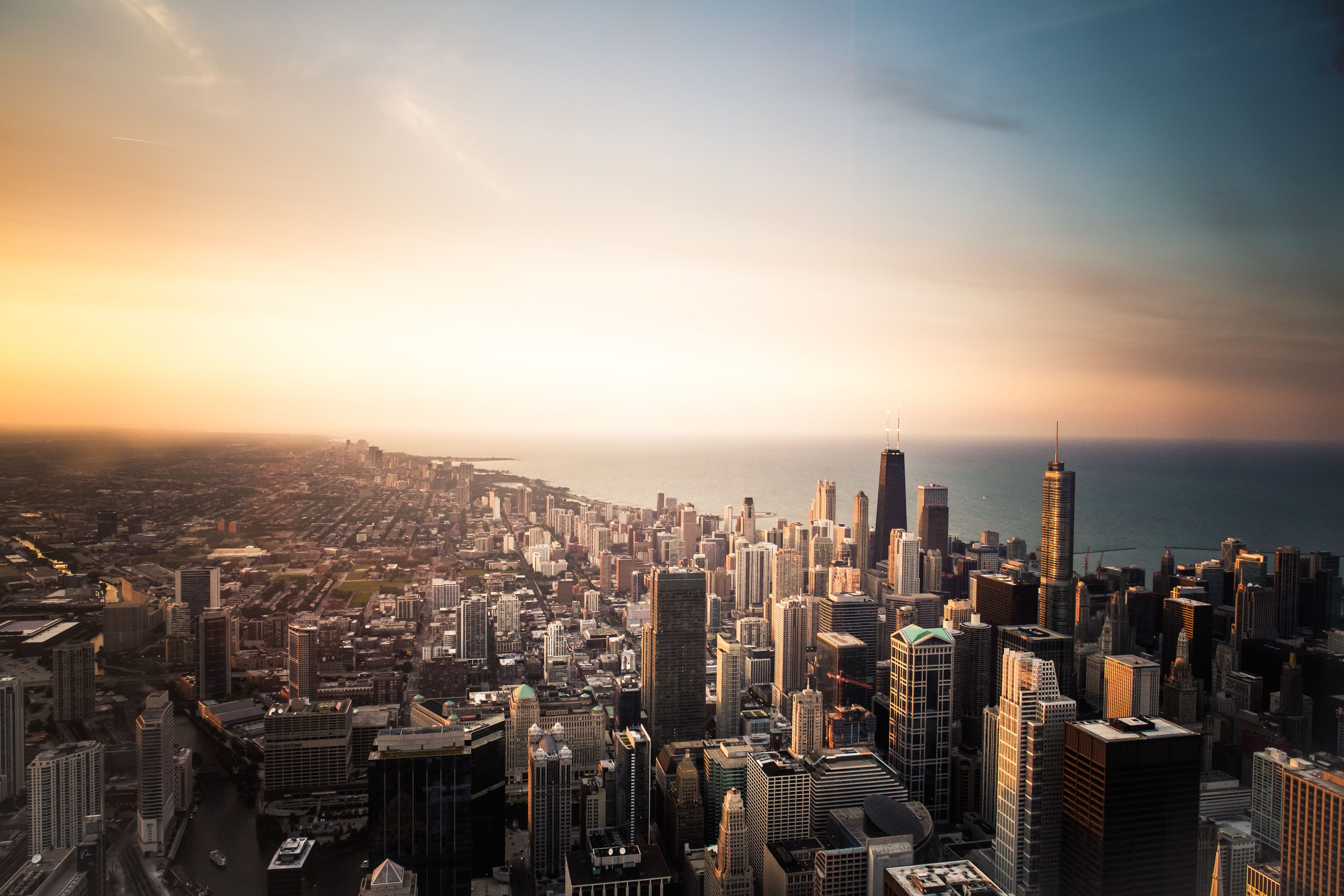
Another way to capture cityscape photography is to include the surrounding environment. This style of photography is all about how you can switch up the perspective and viewpoint. Therefore, take a look at the image above and see where the photographer positioned the buildings.
You will see that the buildings are set off to the right, while the main focus draws the viewer’s eye to the incredible sun-drenched sky. This combines the surrounding elements with your cityscape to show a variety of nature and city. If you want to showcase the cityscape in a different light, pull pieces from the surrounding environment to highlight your subject.
6. Create a Multi-Layer Perspective
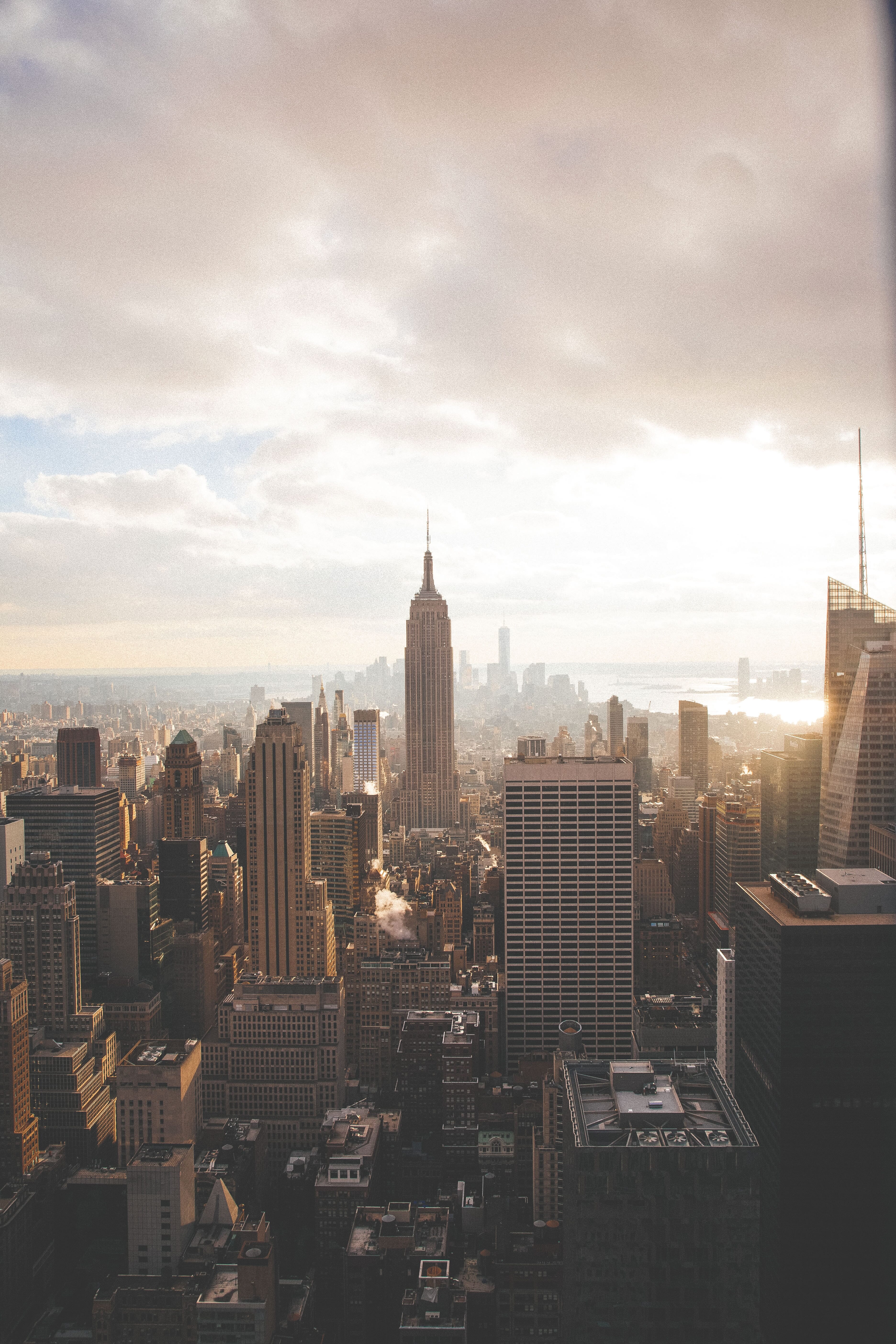
Most cityscape photography is multidimensional. Largely due to the fact that the subjects being photographed are of impeccable design and architecture. So, in order to create images that capture attention – you’ll want to bring out these layers in your photographs.
From the image above, you can see multiple layers within the frame. The foreground of the city, that feels as if the photographer is standing in the center of it all. And, the background behind the first layer of buildings, showing a shadow of the city that is off in the distance.
Therefore, this image is the definition of depth in photography. If you want to create an image with multiple dimensions, stack the layers of the cityscape on top of one another.
7. Shoot Through the City’s Elements

If you’re looking to boost the creativity of your cityscape photography, take the photograph above as an example to follow. By using the broken fence to frame the city, the photographer is shooting through the city’s elements in order to capture an unlikely image.
What can we learn from this? Not all images need to be perfectly aligned or symmetrical to showcase perspective. Instead, finding these hidden pieces within the city expresses the adventurous eye of the photographer. And, allow us to see the city in an entirely new and fresh way.
8. Find the Focal Point
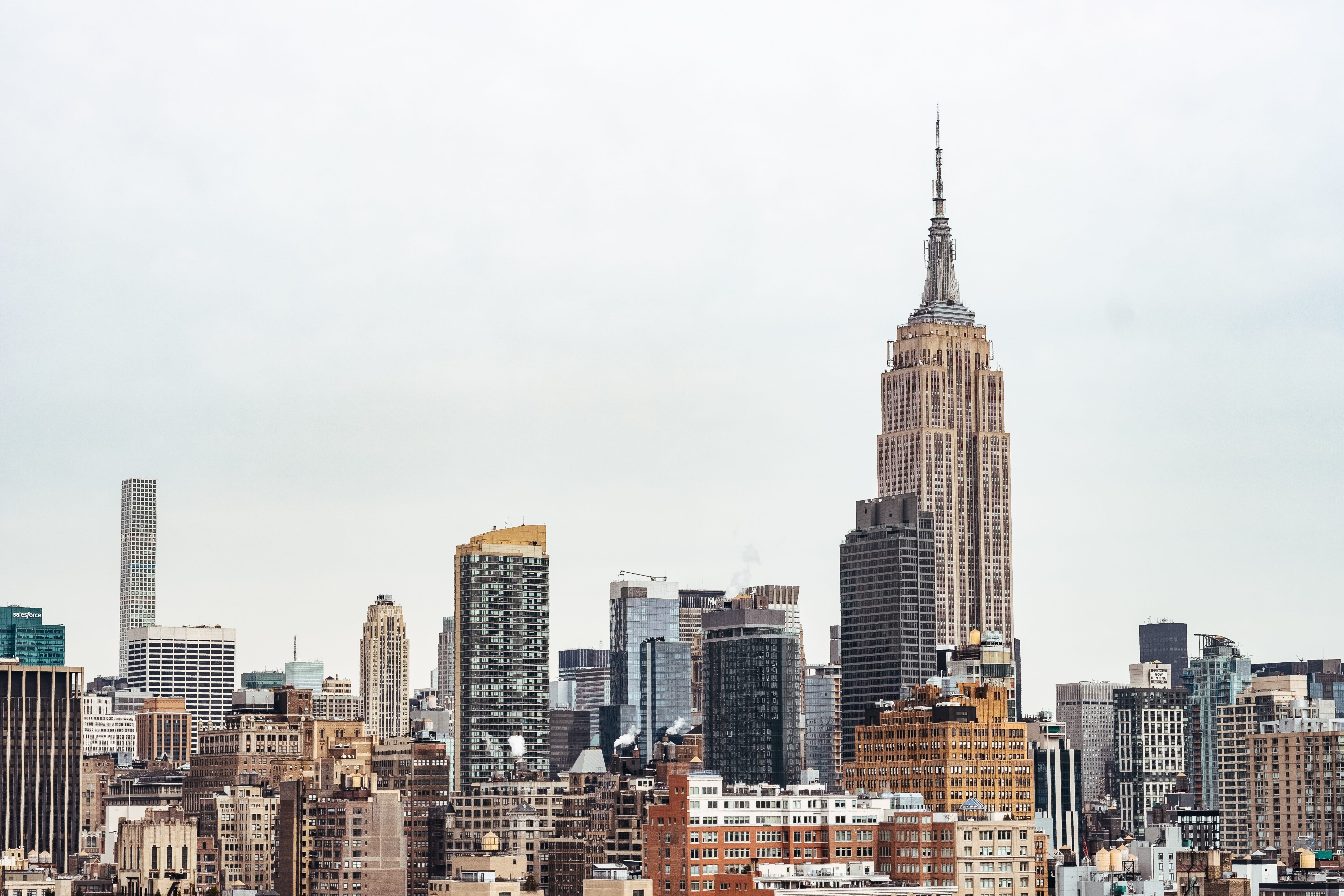
In every city, there is one landmark or building that stands out among the rest. In this image, the photographer takes us to New York City – the city that’s home to exceedingly great architecture.
With this image, he finds the focal point in the frame, the Empire State building, and allows it to be the center of attention in the image. While the remainder of the buildings sit perfectly underneath. To draw the viewer’s eye to a stand out focal-point, find the building that is perched above the rest in your cityscape.
9. Shoot During Imperfect Weather
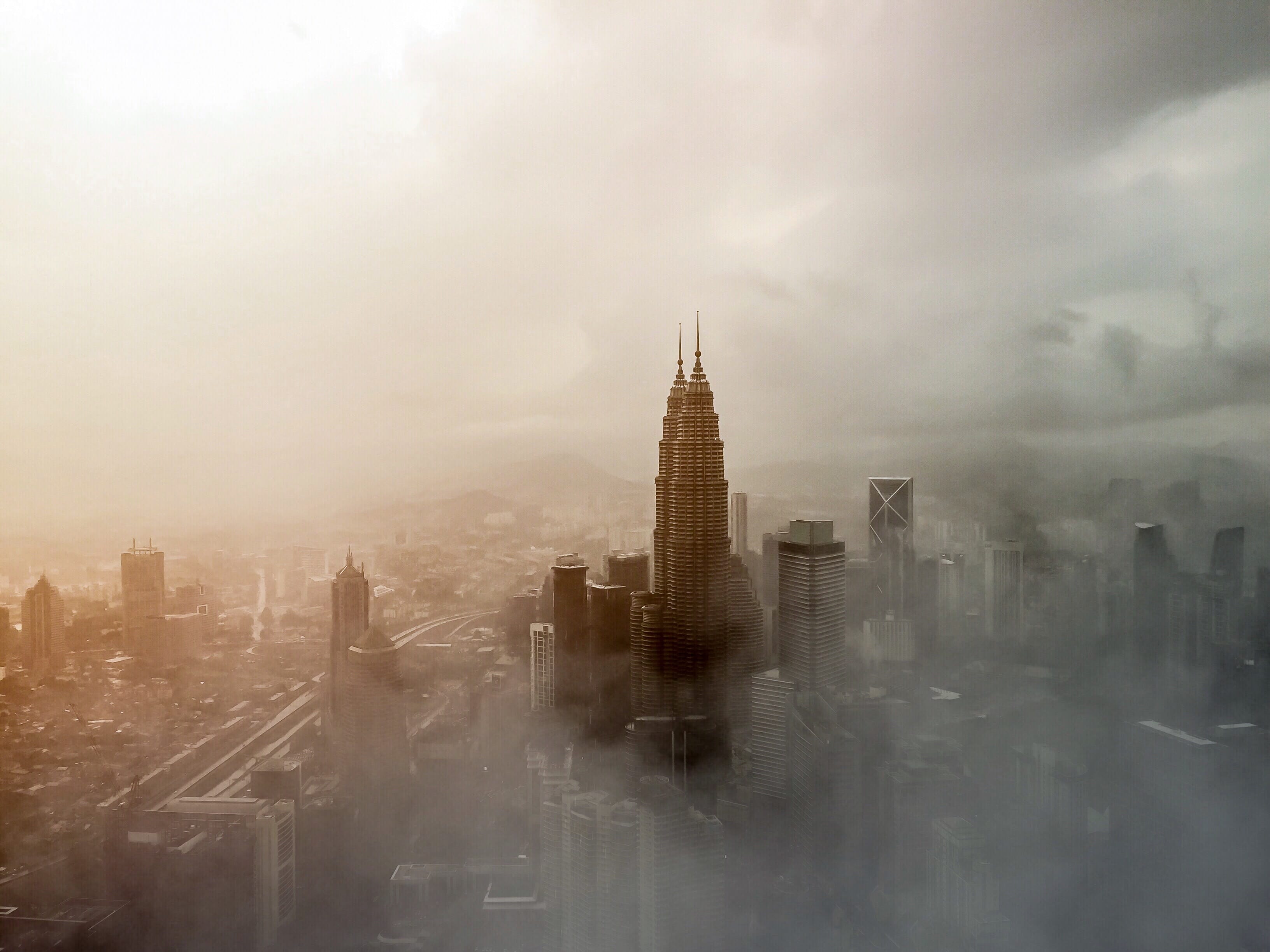
While some may argue that the best weather conditions for shooting are those that offer ample light, this isn’t always the case. Photographers may prefer one time of day over another as various weather conditions can create amazing images.
Take this photograph for example. What can we learn from it? We can see that the fog is completely covering the majority of the cityscape. Except for one stand-alone building, peering out over the tops of the clouds. This creates a heightened sense of drama, mood, and suspense to your image.
So, if you want to create an image that is full of emotion and evokes a reaction from your viewer, try shooting in weather conditions with less visibility.
10. Create Leading Lines
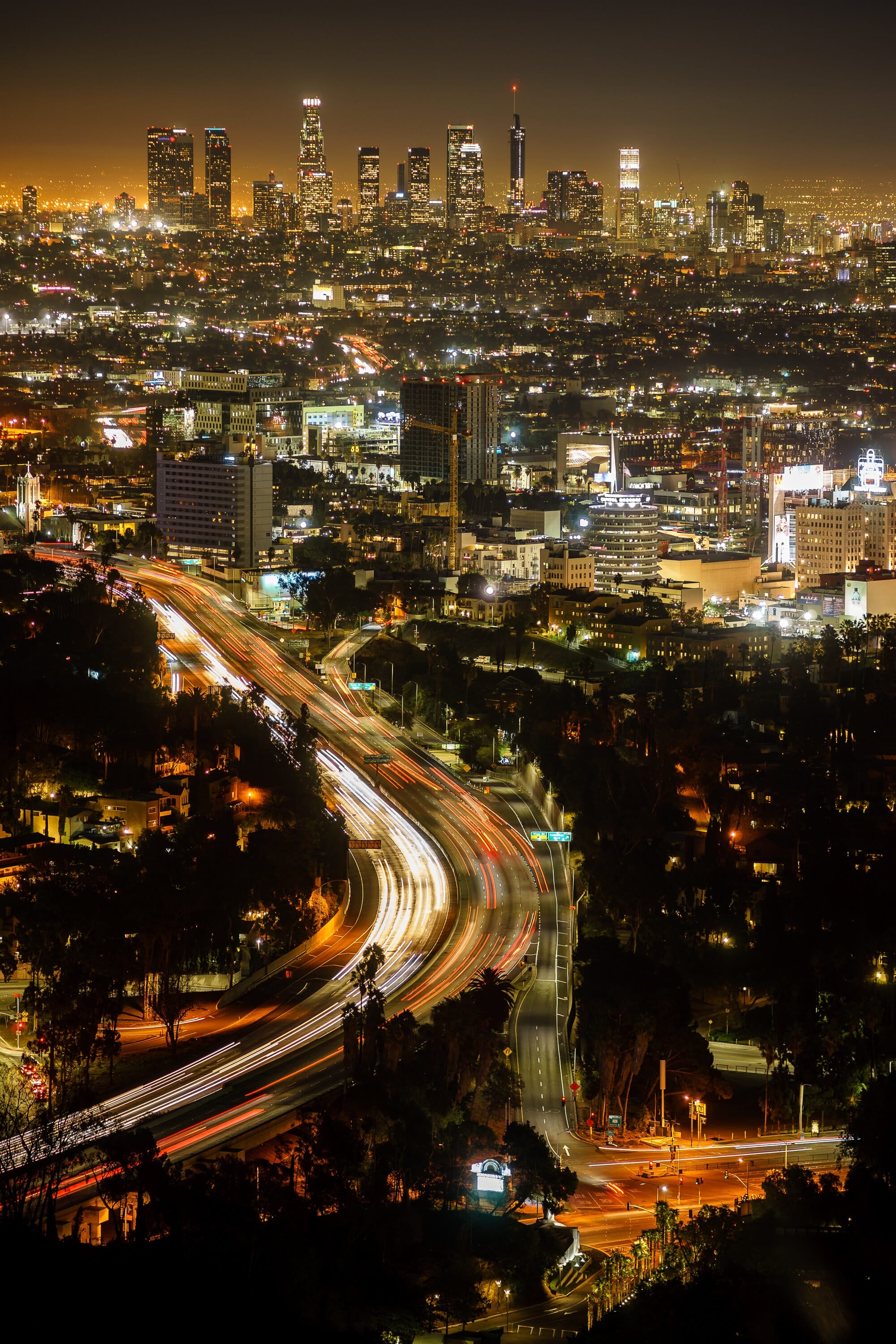
Another way to frame your cityscape is to shoot from a distance. In the image above, we see how the leading lines of the exterior city draw a path to the cityscape in the background. This creates dimension and detail, showcasing the movement that occurs around the city. And, therefore gives us a direction for our eyes to follow.
What can we learn from such a composition? It shows us that cityscapes are more than just the focal point of an image. We can capture the elements that build into the city and act as supporting features to an overall urban environment. If you want to capture cityscapes, think outside the box. Find ways to photograph your subject that veer from the traditional architecturally focused setting.
11. Develop a Contrasting Composition
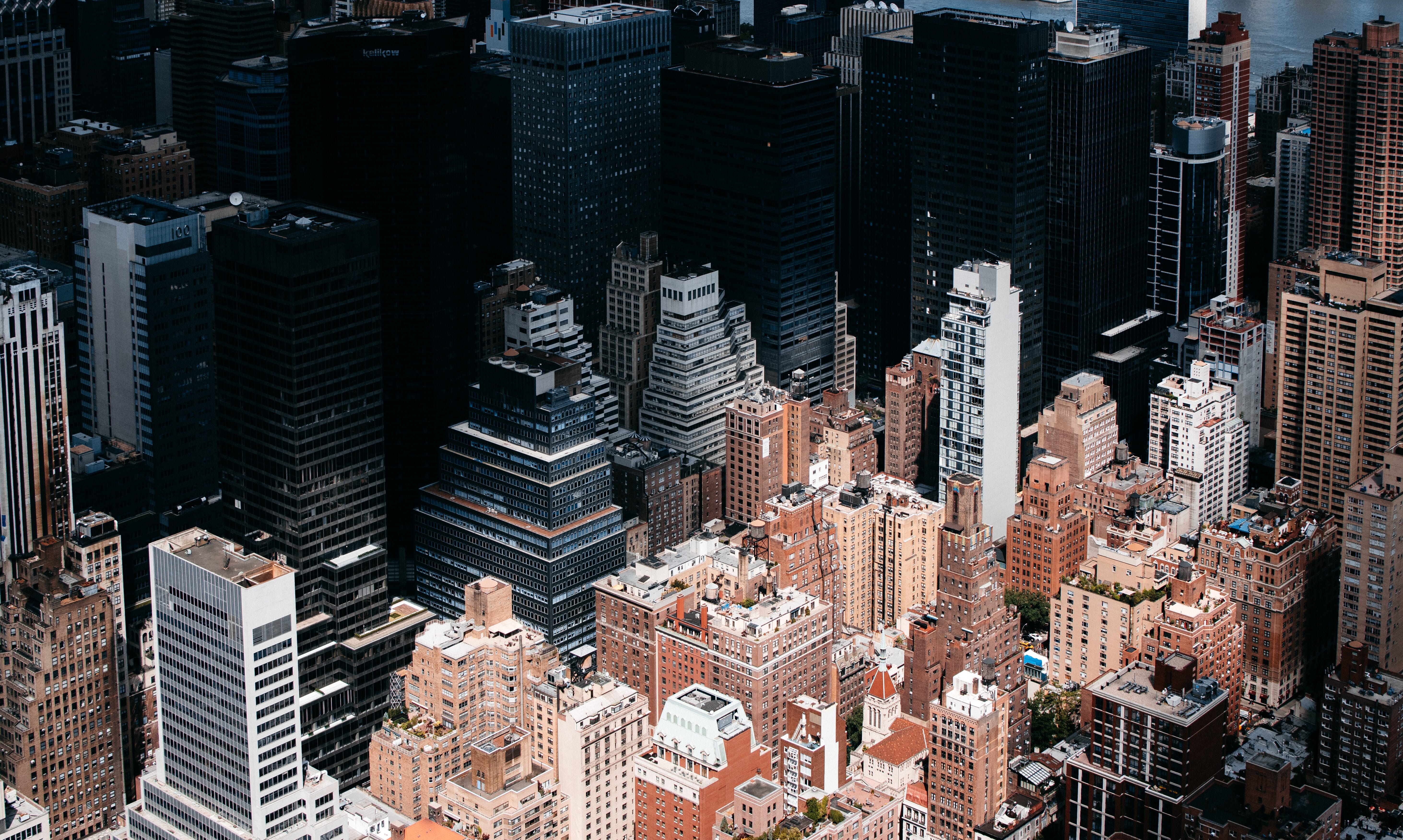
Another way to create stunning cityscape photography is to utilize contrasting compositions. In the image above, the cityscape shifts between light and dark. This change in tonality is a shift in contrast that is highly visual to the viewer. And, it draws your attention back and forth within the frame.
If you want to achieve such contrast in your images, consider looking for the light within the dark. This can happen as points of the day change such as from dusk to dawn. This may not be the easiest to achieve, but will be an adventure in itself to test it out!
12. Shoot from a Bird’s Eye View

One of the most classic ways to photograph the movement of a city is from a bird’s eye view. This overhead perspective allows you to jump into the cityscape, capturing everything that is happening within a few blocks radius.
Related Post: 8 Rooftop Photoshoot Ideas
Bird’s eye images are unique. Sometimes you can use your handheld camera or add a tripod. But, the best bird’s eye photography is done with the use of a drone. These tools can help you reach literal new heights and give you a perspective you couldn’t have imagined. So, if you want to step up your overhead photography, consider using a drone for your images.
13. Photograph at the Point of Intersection
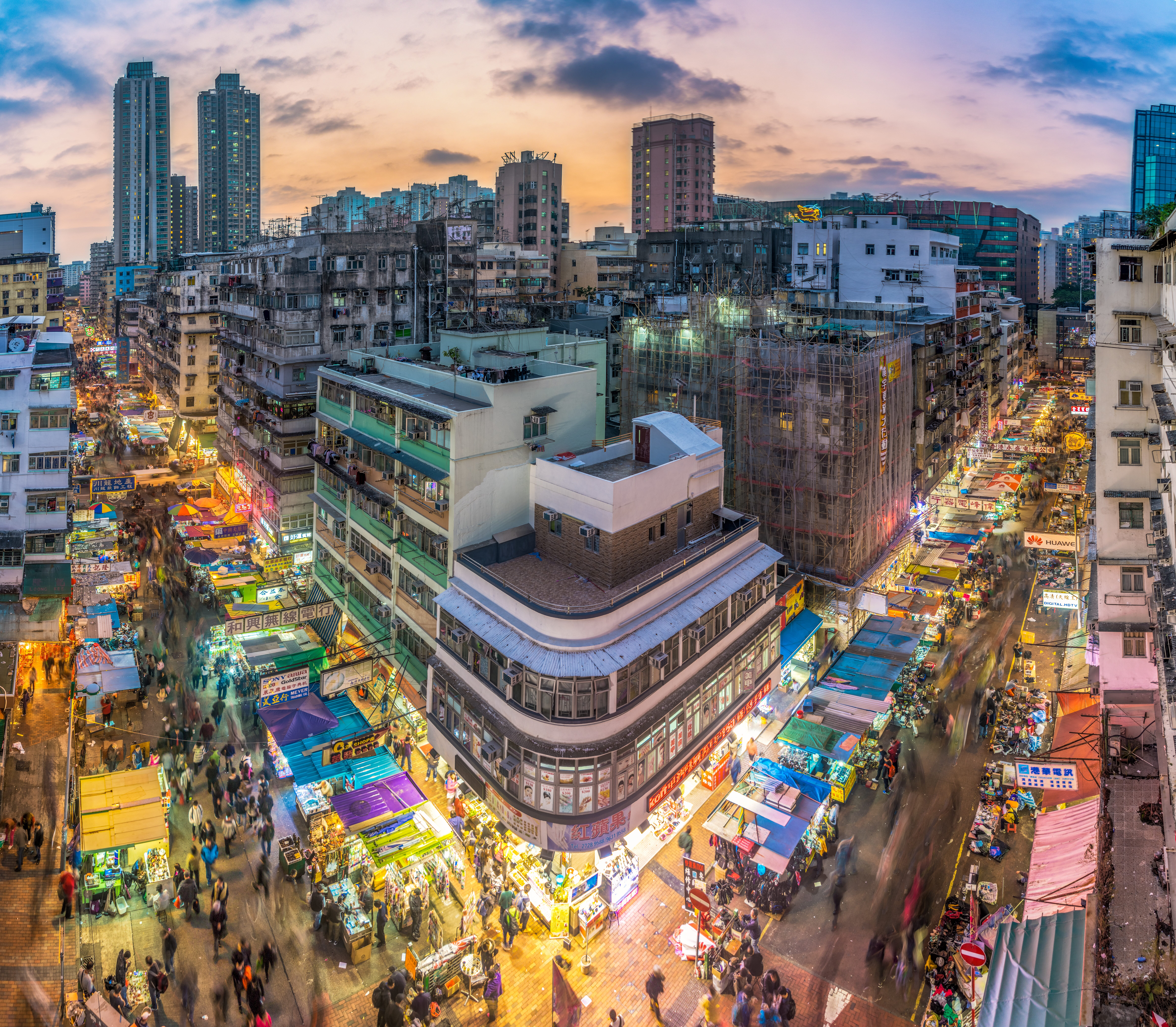
To continue capturing dynamic shots full of movement, you should test out photographing at points of intersection. In the image above, the photographer has positioned himself at the corner of two intersecting streets. This allows the viewer to see the cross between the two paths and how they converge into one.
This visual array is captivating and enticing. It gives a feeling of heightened energy and showcases the true life of the city. We can learn that the points of intersection are valuable marks of composition. And, should be used whenever possible to add a new layer to your cityscape photography.
14. Integrate a Human Subject

This example is a bit different from the rest as it adds a subject other than your cityscape to the photograph. In order to create an even more captivating image, consider adding a human subject to your photography.
As you’ll see in the image above, the frame of the person is situated within the cityscape. This shows a true sense of scale and depth for the viewer. And, it adds a personal touch which your audience can connect with. While traditional cityscape photography is great, people want to see other images. This gives your photograph a true sense of reliability and interest.
15. Capture the Reflection of the Cityscape

If you’re capturing the cityscape at night, there are several ways to make your image unique. One is by photographing any reflections present within your scene. In this image, the buildings are situated along the water, so the lights of the structures reflect on the water’s surface.
Related Posts
What can we learn from this photo? While not every city will be surrounded by water, you can find reflections within various cityscape compositions. These images highlight the architecture and the surrounding environment. And, make for a captivating, beautiful image.
16. Shoot from Street Level

To truly capture the cityscape from a new angle, you’ll need to hit the streets. What can we learn from the image above? Don’t hesitate to change your perspective. By shooting upward, there’s a new viewpoint to the image. And, the photographer is able to add their own unique touch.
The way you shoot up from the streets is entirely up to you. Find some hidden vantage points and be creative. You never know what you might capture!
17. Cityscapes Are More Than Buildings
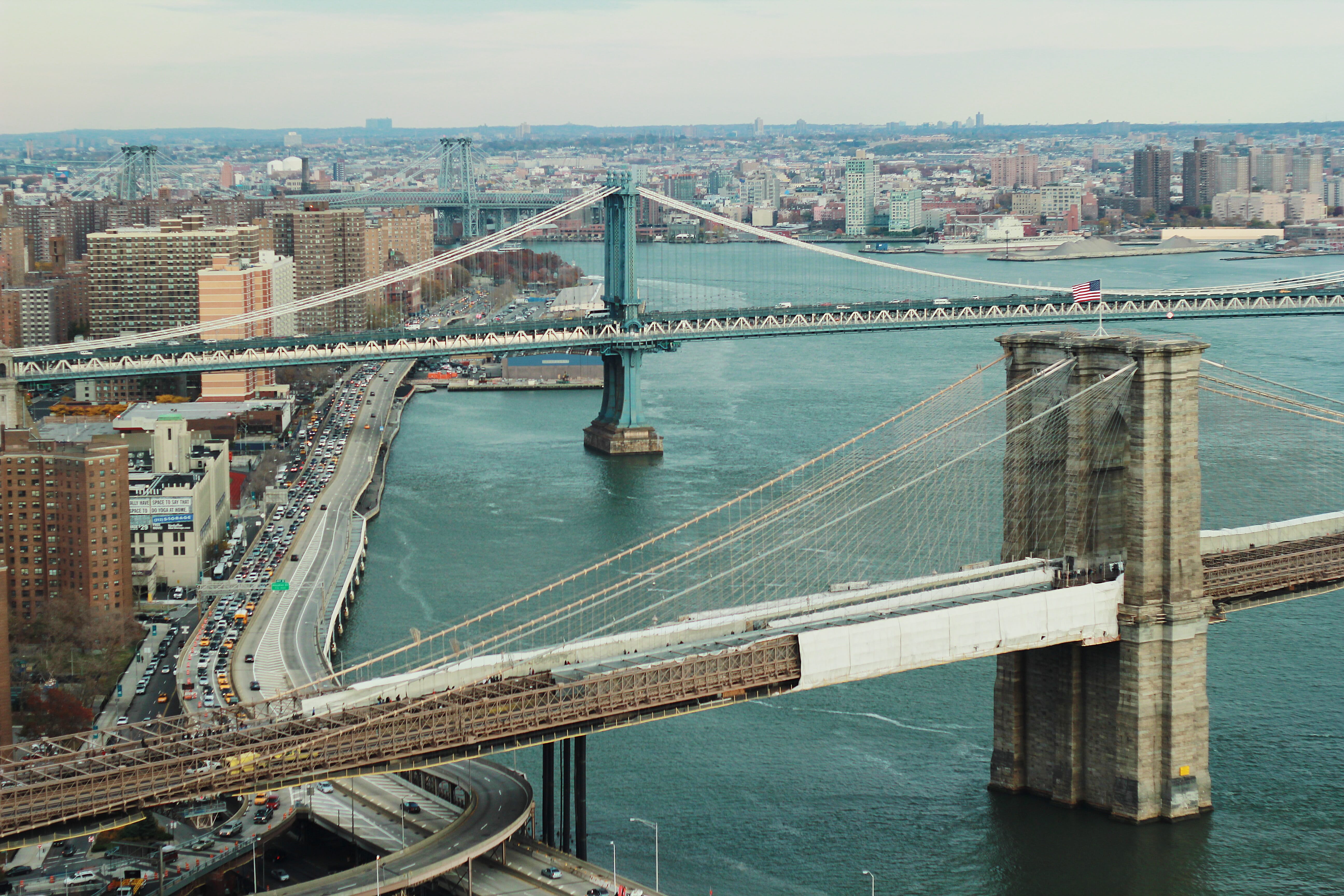
While the architecture of high rises is something to admire, there is more to a cityscape than just its buildings. Consider this image for example, that focuses on two massive and sprawling bridges in New York City. These pieces of architecture are highlights of the city and display true craftsmanship.
Therefore, take this as a note that cityscape photography can be more than skyscrapers and glass buildings. Find the pieces that make the city stand out and include them in your images.
18. Capture Highs & Lows
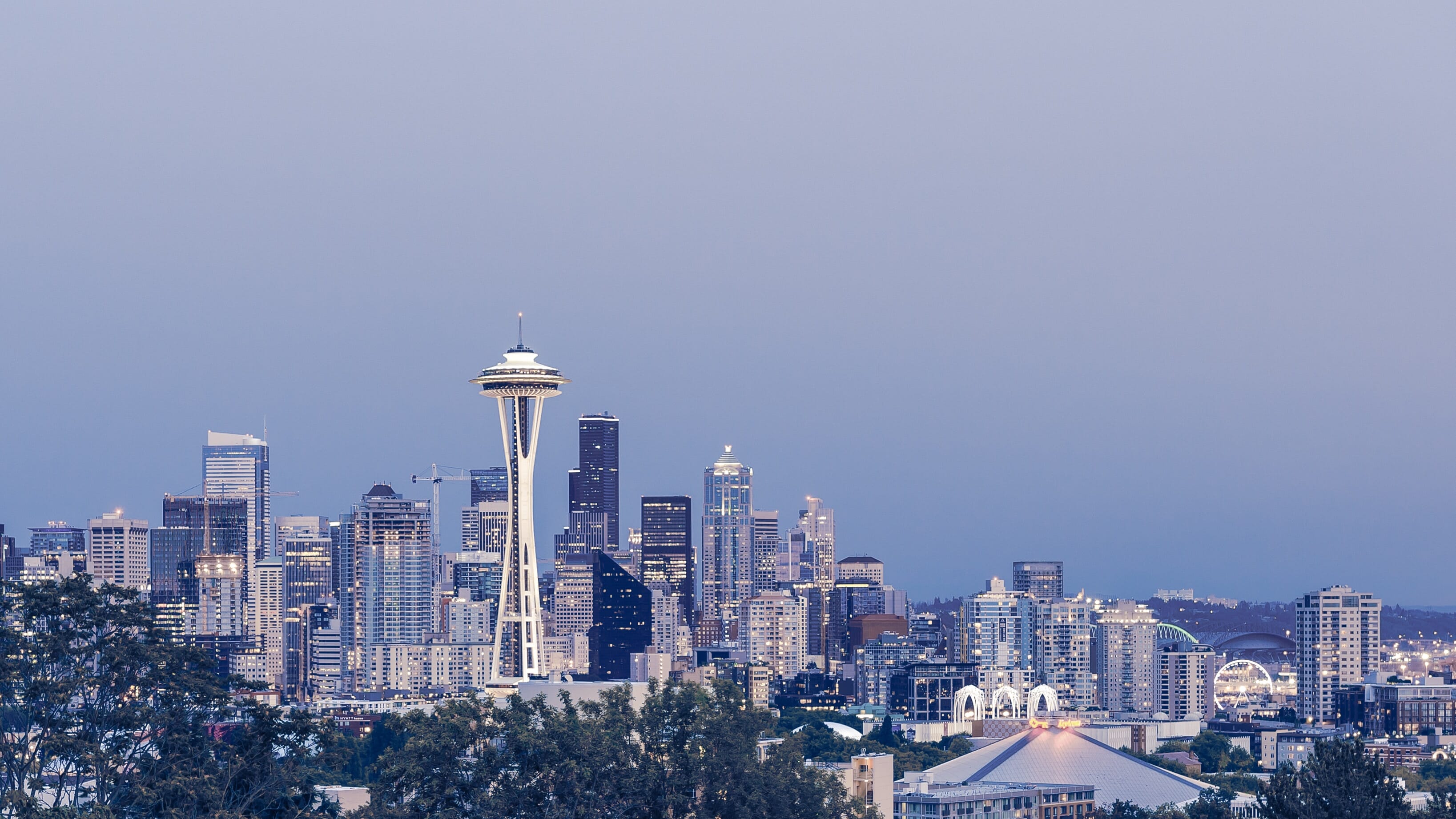
The highs and lows of this image are apparent as you follow the cityscape across the skyline. This gives you the appearance of peaks and valleys as if the city is a terrain of mountains. Use other elements of nature, such as rugged mountainside, to inspire your cityscape images.
What can we learn from this image? That cityscapes are just as much of an art piece as nature is. Therefore, we should aim to capture it with intention and layers to showcase its dimension and complexity.
19. Post-Process in Black & White
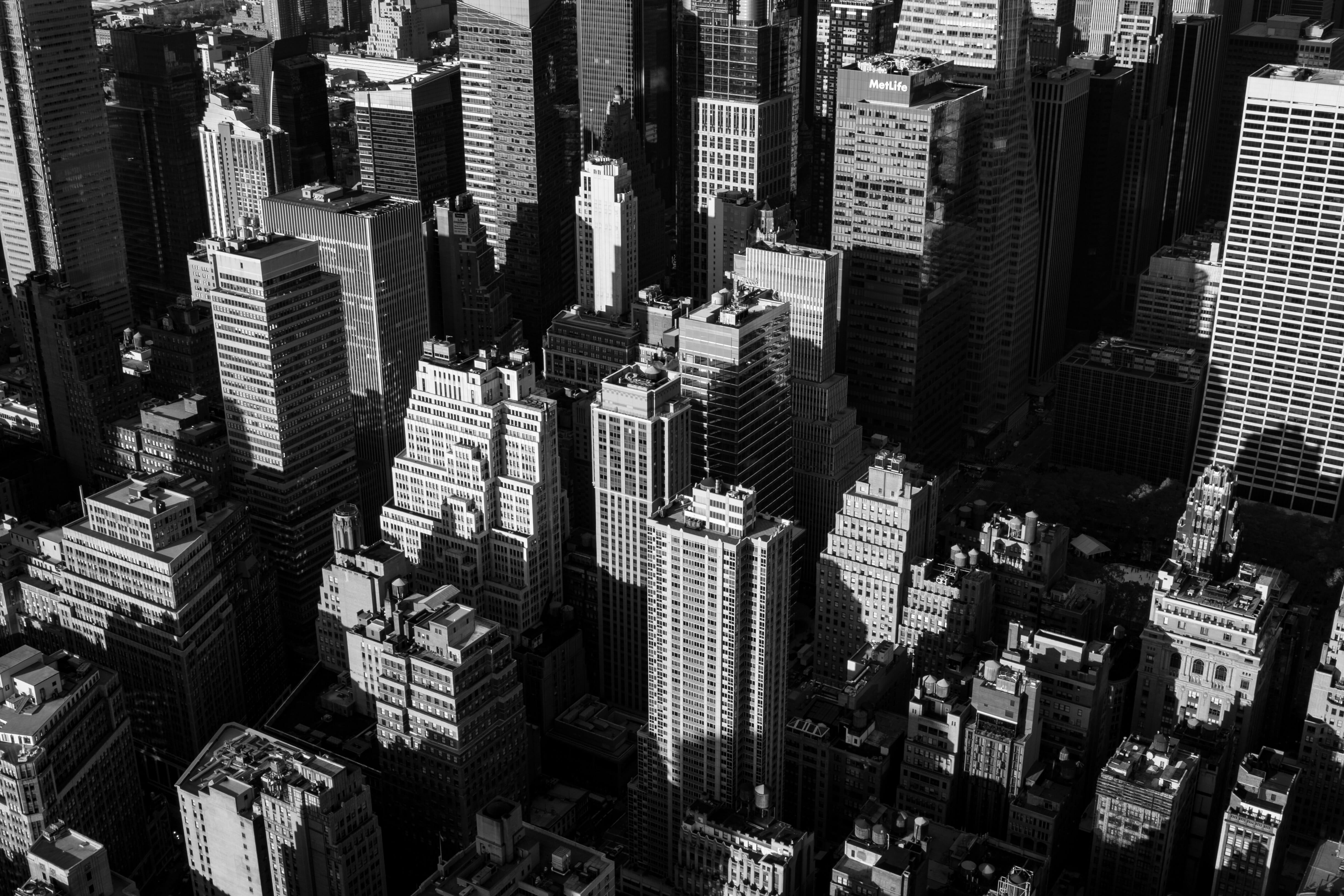
This point is less about the act of shooting your cityscape photography, but more about the post-processing you do to display your image creatively. By editing your image in black and white, you will achieve an image that is visually captivating. Why is that? Because black and white allows us to pull forth the highlights and the shadows within our photographs.
So, what can we learn? That editing is just as important as shooting your subject. As you can see in the sample image, black and white editing adds tonal texture, mood, and emotion to your image. And, it gives the scene an element of infused power and strength.
20. Don’t Be Afraid of the Dark
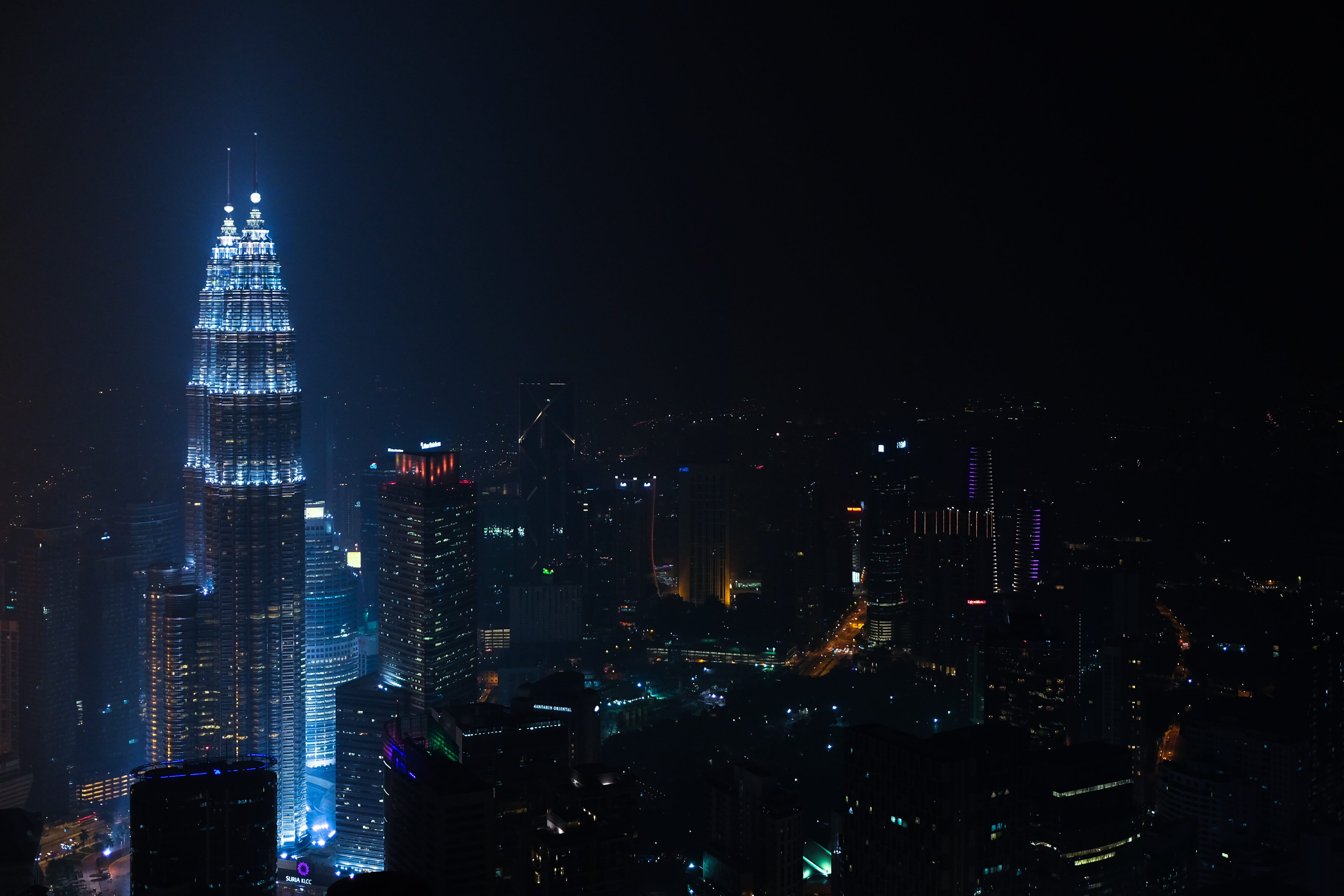
The final tip for photographing cityscapes is to not be afraid of the dark. While images that showcase the bright lights of the city are incredible, an image like above can have just as potent of an effect. In the image, we see the city mostly dark – except for one building shining through the blackness.
This gives the image a stunning effect of power and suspense. Therefore, leaving the viewer with strong emotions and a connection to the story this photograph tells. So, what can we learn? Use the darkness to your advantage, discover the elements that stand out and create an image that speaks to the viewer.
